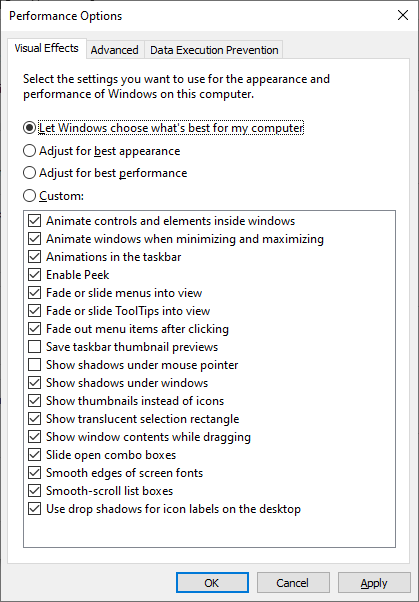Windows enables various visual effects, such as fading or sliding menus or tooltips or windows animations while minimizing and maximizing, to enhance the appearance of Windows.
These effects do not have much impact on your CPU and most likely will not cause any problems with your audio setup, since your graphics card handles processing of these effects. However, if you want to get the best performance for your PC, you might want to review the settings for controlling the visual effects on your PC.
Click on the Start button and then type in View advanced system settings; click on the View advanced system settings control panel item:

Afterwards click on the Advanced tab and then on the Settings… button to show performance-related settings:

If you want to have the best performance at the expense of the visual appearance of your Windows, click on the Adjust for best performance radio button. We recommend that you use a Custom option for everyday use, balancing between appearance and performance, as the majority of people will most likely find the adjustments for best performance overly spartan and harder to read as font smoothing, for example, may get switched off.
We suggest that you enable the following settings, as they improve overall readability and the user experience:
•Use drop shadows for icon labels on the desktop,
•Smooth edges of screen fonts,
•Show windows contents while dragging,
•Show thumbnails instead of icons.
On Windows 10, you might also want to adjust the Display settings, which are found under the Ease of Access section. Click on the Start button, click on Settings and then Ease of Access:

You can turn off animations, transparency effects and choose whether to hide scroll bars in Windows (NB Colors setting is the other place where you can turn off transparency; Start -> Settings -> Personalization -> Transparency effects).
On Windows 11, these settings are located under Settings -> Accessibility -> Visual effects.